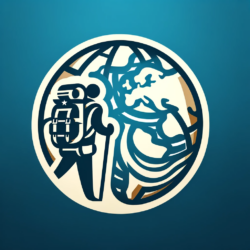Antarctica Picture Gallery
Vorweg noch ein paar nützliche Infos zur Reise Argentinien und Antarktis: (Stand November. 2008)
- Die Schiffsreise in die Antartkis hat mich ca. 2.700 Euro gekostet (alles ausser alkoholische Getränke inkludiert)
- Auf meinem Schiff waren ca. 70 Passagiere, bis 100 hat man ein gutes Gruppengefühl, danach driftet so eine Schifffahrt laut Aussage von Angestellten eher in eine unpersönliche Pauschalreise ab.
- Kosten für Flug mit Lufthansa von Österreich über Frankfurt nach Buenos Aires: ca. 1000 Euro
- Für die Photos hatte ich eine Sony Alpha 350 sowie eine Sony W5 (Kompaktkamera). Jeweils ein Reserveakku reicht, da die Landausflüge immer nur ein paar Stunden dauern und man dazwischen aufladen kann. Zum filmen habe ich eine Panasonic GS 320 verwendet.
- Für Inlansflüge habe ich LAN verwendet – deren Service ich absolut empfehlen kann, kostenlose Umbuchungen waren nie ein Problem, die Flugzeuge top in Ordnung und der Preis ok. Flug Buens Aires – Ushuaia kostete ca. 200 Euro.
- Nützliche Links:
- http://www.quark-expeditions.com – Führt Schiffsreisen in die Arktis und Antarktis durch.
- http://www.adventure-life.com – Reisebüro bei dem ich die Antarktis gebucht habe.
- http://www.lan.com Hier habe ich die Inlandsflüge in Argentinien gebucht.
Viel Spaß mit meinem Reisebericht Argentinien und Antarktis – über Feedback freue ich mich natürlich!
Norway 2008, Jotunheimen
Norway, Oslo 2007
Cuba Picture Gallery
Oslo, Norway 2006
Rome, Italy
The city of Rome is located in the central-western portion of the Italian Peninsula, on the Tiber river within the Lazio region of Italy. It has been one of history’s greatest, most powerful and important cities, being the home of the emperor during the Roman Empire and the modern seat of the Italian government. Rome also has a significant place in Christianity and is the present day home of the Roman Catholic Church and the Pope, and the site of the Vatican City, an independent city-state run by the Catholic Church. Due to this centrality on many levels, the city has been nicknamed „Caput Mundi“ (Latin for „Capital of the World“) and „The Eternal City“.
Rome’s history spans over two and a half thousand years. It was the centre of the Roman Republic and of the Roman Empire, which was a major political and cultural influence in the lands bordering the Mediterranean Sea for over four hundred years from the 1st Century BC until the 4th Century AD. During the Middle-Ages, Rome was home to popes such as Alexander VI and Leo X, who transformed the city into one of the major centres of the Italian Renaissance, along with Florence. The current-day version of St Peter’s Basilica was built and the Sistine Chapel’s ceiling was painted by artist Michelangelo. Famous artists and architects, such as Bramante, Leonardo da Vinci, Bernini and Raphael resided for some time in Rome, contributing to its Renaissance and Baroque architecture. As a modern city, it has been capital of the unified Italy since 1870, and grew mainly in two periods before and after World War II. Rome has had an immense historic influence to the world and modern society over the ages, particularly during ancient times, mainly in subjects such as architecture, art, culture, politics, literature, law, philosophy and religion.
The city of Rome is located in the central-western portion of the Italian Peninsula, on the Tiber river within the Lazio region of Italy. It has been one of history’s greatest, most powerful and important cities, being the home of the emperor during the Roman Empire and the modern seat of the Italian government. Rome also has a significant place in Christianity and is the present day home of the Roman Catholic Church and the Pope, and the site of the Vatican City, an independent city-state run by the Catholic Church. Due to this centrality on many levels, the city has been nicknamed „Caput Mundi“ (Latin for „Capital of the World“) and „The Eternal City“.Rome’s history spans over two and a half thousand years.
It was the centre of the Roman Republic and of the Roman Empire, which was a major political and cultural influence in the lands bordering the Mediterranean Sea for over four hundred years from the 1st Century BC until the 4th Century AD. During the Middle-Ages, Rome was home to popes such as Alexander VI and Leo X, who transformed the city into one of the major centres of the Italian Renaissance, along with Florence. The current-day version of St Peter’s Basilica was built and the Sistine Chapel’s ceiling was painted by artist Michelangelo. Famous artists and architects, such as Bramante, Leonardo da Vinci, Bernini and Raphael resided for some time in Rome, contributing to its Renaissance and Baroque architecture. As a modern city, it has been capital of the unified Italy since 1870, and grew mainly in two periods before and after World War II. Rome has had an immense historic influence to the world and modern society over the ages, particularly during ancient times, mainly in subjects such as architecture, art, culture, politics, literature, law, philosophy and religion.




















































































































































